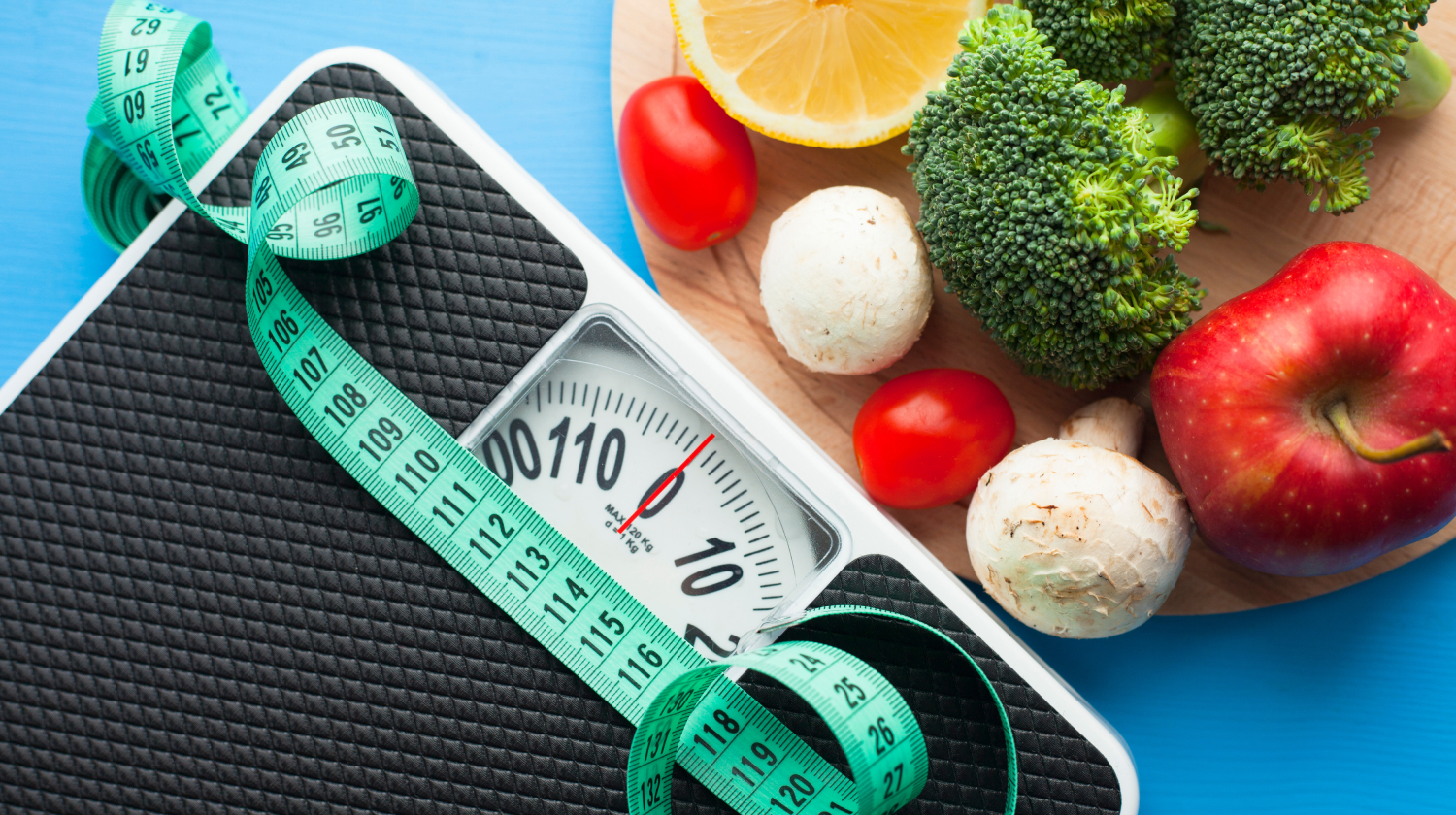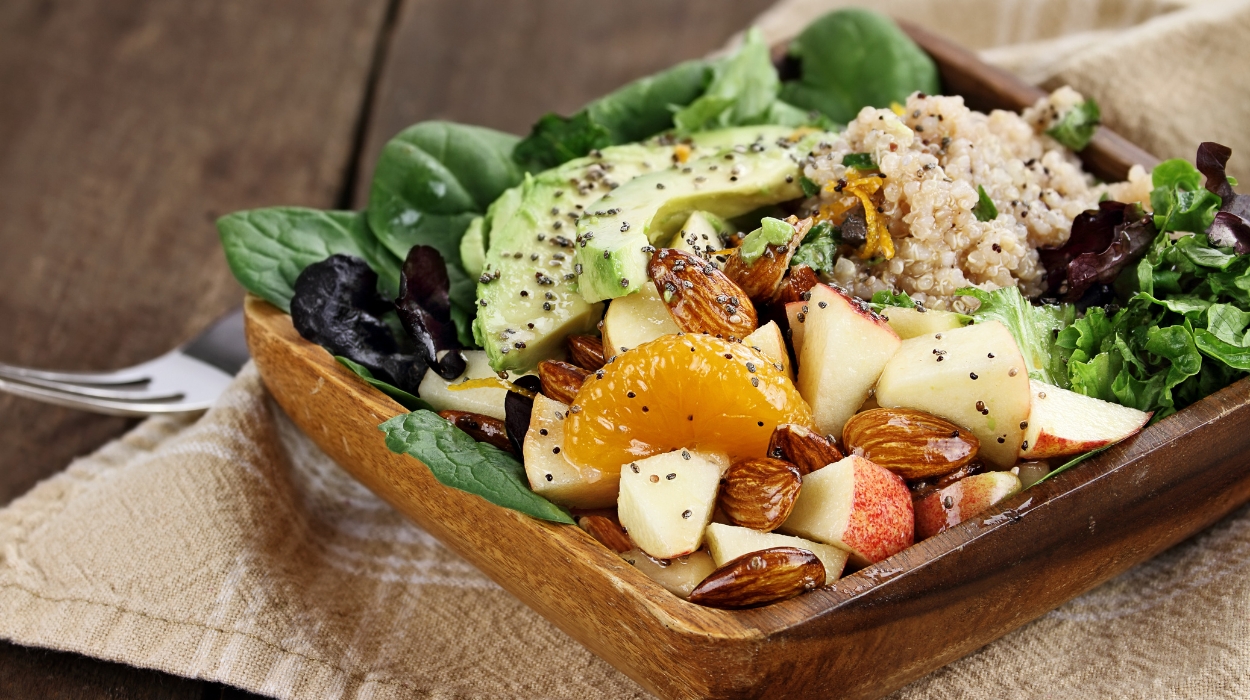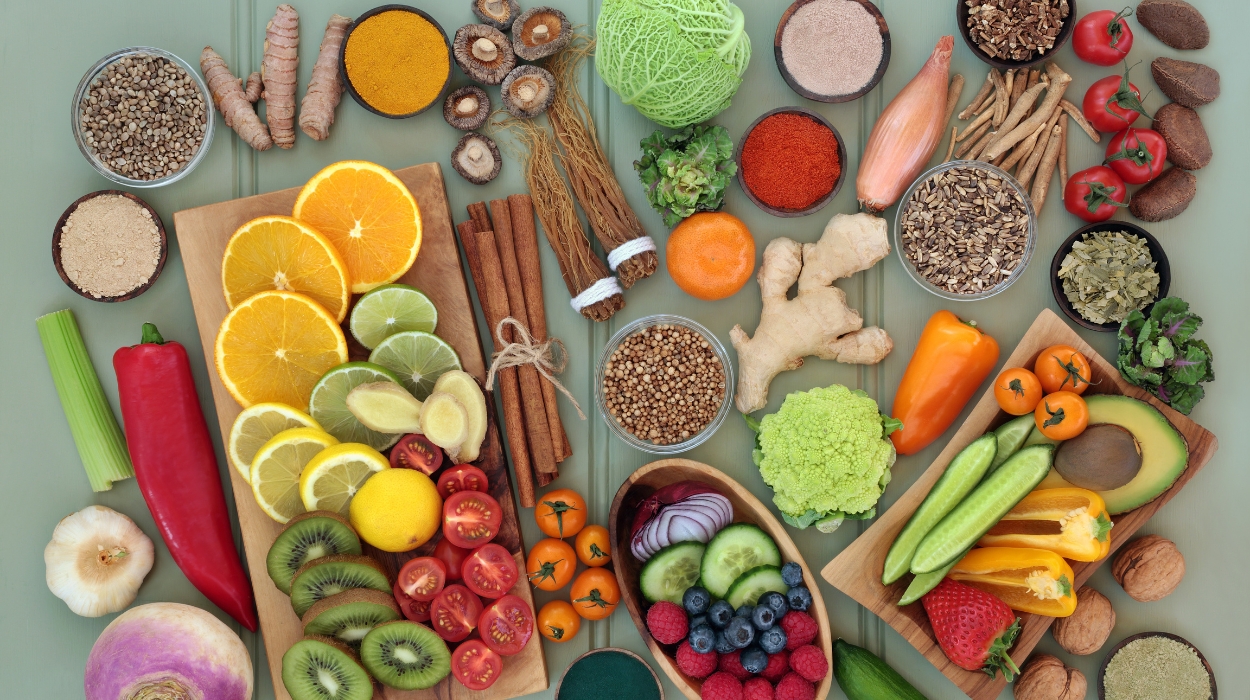 Expert's opinion
Expert's opinion
Expert's opinion
The article is a subjective view on this topic written by writers specializing in medical writing.
It may reflect on a personal journey surrounding struggles with an illness or medical condition, involve product comparisons, diet considerations, or other health-related opinions.
Although the view is entirely that of the writer, it is based on academic experiences and scientific research they have conducted; it is fact-checked by a team of degreed medical experts, and validated by sources attached to the article.
The numbers in parenthesis (1,2,3) will take you to clickable links to related scientific papers.
80/20 Rule Diet: What It Is & How To Follow For Weight Loss 2024

It’s a new year, so you might be looking for different ways to get healthier and possibly lose weight. The 80/20 rule diet is a healthy eating plan in which you don’t have to give up all your favorite guilty pleasures. It is more of a lifestyle change than a diet, allowing you to consume all of your favorite foods in moderation while simultaneously getting healthier.
The 80/20 rule diet is a healthy, non-depriving eating plan that doesn’t feel like you are on a diet at all. Eating 80/20 is more of a lifestyle change than abstaining and adhering to a healthy diet plan.
It’s also easy to understand and follow compared to other diet plans. It’s a new concept as it allows you to indulge now and then while still maintaining an overall nutritious diet. To learn more about this new trend, keep reading.
80/20 Rule Diet Plan For Weight Loss
- Day One: Balanced Beginnings
- Day Two: Wholesome Delights
- Day Three: Nutrient-Rich Indulgence
- Day Four: Savory Selections
- Day Five: Culinary Balance
- Day Six: Energizing Delights
- Day Seven: Wholesome Indulgence
Seven-Day Sample Plan For 80/20 Rule Diet
When it comes to the 80/20 rule diet, how can you calculate a meal plan? In this diet plan, there are 21 meals — three healthy meals per day for seven days — therefore, take the number of total meals by 80 percent to determine how many meals can be a treat.
Here is a 7-day 80/20 rule diet plan for weight loss as a sample. Cheat meals are italicized and in bold.
Day One: Balanced Beginnings (Approx. 1400 Calories)
This plan offers a variety of flavors, from protein-packed scrambled eggs to a classic cheeseburger with a healthy twist. Savor the taste of cottage cheese, grilled chicken salad, and organic popcorn, making a mindful choice for dinner with sweet potatoes and asparagus.
| Breakfast | |
| Scrambled eggs | Two eggs |
| Bell peppers | One fourth cup |
| Spinach | One fourth cup |
| Lunch | |
| Grilled chicken salad | Four ounces |
| Dinner | |
| Cheeseburger | One serving |
| Sweet potatoes | One half cup |
| Asparagus | One half cup |
| Snack | |
| Cottage cheese and tomatoes | One cup |
| Organic plain popcorn | One serving |
Day Two: Wholesome Delights (Approx. 1450 Calories)
Start your day with Greek yogurt and berries and enjoy a turkey and avocado wrap for lunch. Satisfy your sweet tooth with dark chocolate while relishing a dinner of sweet potato, black beans, shredded chicken, and spinach.
| Breakfast | |
| Greek yogurt | One cup |
| Berries | One half cup |
| Lunch | |
| Whole wheat wrap with hummus | One serving |
| Turkey | Three ounces |
| Tomatoes and avocados | One half cup |
| Dinner | |
| Sweet potato | One serving |
| Black beans | One half cup |
| Shredded chicken | Four ounces |
| Spinach | One cup |
| Snack | |
| Carrots & Snap Peas | One cup |
| Hummus | Two tablespoons |
| Dark chocolate | One serving |
Day Three: Nutrient-Rich Indulgence (Approx. 1350 Calories)
Enjoy pancakes with apples and walnuts for breakfast, a satisfying tuna sandwich at lunch, and get creative with a homemade fruit “ice cream” snack. Conclude the day with grilled tilapia, broccoli, and wild rice for a well-rounded meal.
| Breakfast | |
| Pancakes | Two servings |
| Chopped apples | One half cup |
| Sliced walnuts | One teaspoon |
| Lunch | |
| Tuna | Three ounces |
| Whole wheat bread | One bread |
| Tomatoes and lettuce | One cup |
| Dinner | |
| Grilled tilapia | Four ounces |
| Broccoli | One cup |
| Wild rice | One half cup |
| Snack | |
| Orange | One |
| Nuts or berries | One handful |
| Fruit “ice cream” | One frozen banana |
Day Four: Savory Selections (Approx. 1450 Calories)
Start your day with the familiar taste of scrambled eggs and continue with a chicken wrap for lunch. Indulge in a snack of cottage cheese and tomatoes, and don’t forget to savor grilled swordfish, kale, and quinoa salad for dinner.
| Breakfast | |
| Scrambled eggs | Two eggs |
| Bell peppers | One fourth cup |
| Spinach | One fourth cup |
| Lunch | |
| Grilled chicken | Four ounces |
| Whole wheat wrap | One wrap |
| Lettuce, tomatoes, bell peppers | One cup |
| Dinner | |
| Grilled swordfish | Four ounces |
| Kale, veggies, vinaigrette | As desired |
| Quinoa | One half cup |
| Snack | |
| Cottage cheese | One half cup |
| Tomatoes | One half cup |
| Potato chips | One serving |
Day Five: Culinary Balance (Approx. 1500 Calories)
Satisfy your cravings with a slice of pizza, accompanied by a refreshing spinach salad. Keep your energy up throughout the day with Greek yogurt, hummus, and veggies, and a snack of green apple with cashews or almonds.
| Breakfast | |
| Greek yogurt | One cup |
| Berries | One half cup |
| Lunch | |
| Wrap with hummus | One serving |
| Turkey | Three ounces |
| Tomatoes and avocados | One half cup |
| Dinner | |
| Pizza | One slice |
| Spinach salad | One bowl |
| Snack | |
| Carrots & bell peppers with hummus | One cup |
| Green apple with raw cashews or almonds | One apple |
Day Six: Energizing Delights (Approx. 1600 Calories)
The meal plan offers a fulfilling start with oatmeal and berries. Fuel up with eggs and whole wheat toast for lunch, and indulge your sweet tooth with a serving of ice cream for a snack. Conclude the day with a dinner featuring grilled shrimp, veggies, and black rice.
| Breakfast | |
| Oatmeal | One cup |
| Chopped berries | One half cup |
| Sliced walnuts | One tablespoon |
| Lunch | |
| Boiled egg | Two eggs |
| Whole wheat toast | Two slices |
| Smoothie | One cup |
| Dinner | |
| Grilled shrimp | Four ounces |
| Broccoli and asparagus spears | One cup |
| Black rice | One half cup |
| Snack | |
| Apples and a handful of nuts | One apple |
| Ice cream | One serving |
Day Seven: Wholesome Indulgence (Approx. 1550 Calories)
The plan offers a delightful oatmeal breakfast followed by a serving of chicken nuggets and a smoothie for lunch. Snack on celery with peanut or almond butter, and conclude the day with a dinner featuring grilled shrimp, veggies, and black rice. Enjoy this wholesome indulgence!
| Breakfast | |
| Oatmeal | One cup |
| Chopped berries | One half cup |
| Sliced walnuts | One tablespoon |
| Lunch | |
| Chicken nuggets | One serving |
| Smoothie | One cup |
| Dinner | |
| Grilled shrimp | Four ounces |
| Broccoli, asparagus spears, | One cup |
| Black rice | One half cup |
| Snack | |
| Celery | As desired |
| Peanut butter or almond butter | Two tablespoons |
What Is The 80/20 Rule Diet?

The 80/20 rule diet was developed by a chef, nutritionist, and personal trainer by the name of Teresa Cutter. The basic principle of the diet is to eat healthfully 80 percent of the time while indulging in treats and cravings 20 percent of the time.
Therefore 80 percent of the time, you are supposed to eat healthy whole foods such as vegetables, fruits, lean proteins, and whole grains. Then, 20 percent of the time, you are allowed to consume your cravings or treats in moderation.
The creator, Teresa Cutter, has also published a book that is an excellent addition to the diet in which she has created over 130 recipes that correlate with the 80/20 rule diet principles.
For example, consuming breakfast, lunch, and dinner for a week would give you 21 total meals. Based on the 80/20 rule diet, you can have four cheat meals that contain one serving of “bad for you” food.
For example, the bad food for you may include a slice of pizza, a cheeseburger, some fries, or a glass of wine. Of note, this diet does not allow you to binge on all of these items at once, but rather a serving of one at a time.
The upside to this diet is that you aren’t depriving yourself. Instead of restricting yourself like other diets tend to lean towards, you are giving into your body’s cravings. The key is you are having just one serving at the appropriate time, not overindulging.
Instead of telling yourself something is off limits, you can say to yourself, I can eat that tomorrow or the next day, which is a better plan for longevity than other diets.
Health Benefits Of The 80/20 Rule Diet

Most experts agree that restrictive diets are not a sustainable and long-term solution for healthy weight loss. Therefore, the 80/20 approach is a wonderful option as it does not rely solely on a person’s willpower.
Instead, it allows people to treat themselves in moderation which is good for your psyche. It also helps you enjoy your treats even more as you do not have them as often. This type of well-balanced diet and healthy meal plan centered around lots of fruits, vegetables, lean proteins, and whole grains is a great way to fill your body with essential nutrients, fiber, and water.
Additionally, weight loss will likely follow suit when you load up on high-fiber, low-calorie, and nutrient-dense foods such as fruits and vegetables.
Another benefit to the 80/20 diet is that it removes a lot of anxiety that comes with dieting. People do not need to feel restricted or nervous that they can never have their favorite foods again. Allowing indulgences every once in a while also removes the desire to binge on foods.
Lastly, it eliminates a lot of guilt that can come from restrictive diets. Instead, the treats are carved into the diet and encouraged. Therefore, there is no need to feel guilty after consuming a well-deserved treat and eating cleanly 80 percent of the time.
Potential Side Effects
There are three potential downsides to the 80/20 rule diet: expense, time, and lack of structure.
Expense
First, the diet consists mainly of fruits, vegetables, lean proteins, and whole grains. These items are encouraged to be consumed fresh. Therefore, these items can be more expensive when compared to commercially boxed or canned alternatives.
Time-Consuming Meal Prep
The meal preparation necessary with the 80/20 rule can also be time-consuming. Consuming fresh ingredients three times a day plus snacks will take ample time and preparation with meal planning.
This can be a shock and a barrier if you are not used to making a meal plan and shopping/preparing. However, plenty of meal preparation tools on the market today can help you save time and money, as some programs make meal preparations with minimal food waste in mind.
Lack Of Structure
For some people, the 80/20 diet rule may not have enough structure. For example, if you are currently eating a very high-fat and high-sugar diet, you might be tempted to overeat on your 20 percent days.
On the days when you are allowed to have a treat, it should only include one serving, and if you instead have three or four servings, this is not compliant with the 80/20 rule diet.
If you need something more personalized and structured, you should contact a registered dietitian instead and have them create a customized meal plan.
To date, there is no research on the 80/20 rule diet. However, studies[1] have shown that eating the types of foods that encourage it, such as fresh fruits, vegetables, lean proteins, and whole grains is an excellent way to ward off disease and support healthy aging.
Foods To Eat & Avoid
With the 80/20 diet rule, you should follow healthy foods, a clean approach 80 percent of the time, and indulge in a craving 20% of the time. Foods that should be included 80 percent of the time include:
Vegetables
- Lettuce
- Spinach
- Cauliflower
- Broccoli
- Carrots
- Asparagus
- Microgreens
- Kale
- Pumpkin
- Cucumber
- Celery
- Zucchini
- Squash
Fruits
- Strawberries
- Blueberries
- Raspberries
- Oranges
- Apples
- Watermelon
- Honeydew
- Cantaloupe
- Grapefruit
Whole Grains
- Whole wheat bread
- Whole wheat pasta
- Brown rice
- Wild rice
- Quinoa
- Oats
- Barley
- Bulgur
- Millet
- Popcorn
- Farro
Lean Protein
- Chicken
- Tilapia
- Salmon
- Turkey
- Greek yogurt
- Beans, peas, lentils
- Tofu
- Cottage cheese
Unhealthy Foods That Can Be Included In The 20 Percent Of The Time List May Be
- Alcohol
- Fast food
- Baked goods
- Sugared beverages
- Candy
Of note, this list is just a sample list. There are no specific foods you need to consume or avoid on this diet. Instead, focusing on whole nutritious foods would be best. Therefore, this list is not exhaustive but rather a guideline of what is allowed on the 80/20 rule diet.
The Bottom Line
If you are looking for a diet that will give you overall great eating habits and yet let you partake in some treats along the way, the 80/20 diet may be an excellent choice.
The 80/20 diet allows you not to be completely restrictive, yet it allows you some room for indulgence. This is something not all diets offer.
Even though there is no scientific evidence for this diet, diets that recommend high fruits, vegetables, lean proteins, and whole grain consumption are typically excellent at preventing disease, losing weight, and warding off general aging.
Be aware that this diet may have some additional expenses as it mainly focuses on fresh ingredients. That means you will spend some extra time on meal preparation as well.
However, a bonus to this diet is that it doesn’t require measuring or counting calories or even any restrictions. So if you are looking for a healthy lifestyle change that doesn’t involve deprivation, check out the 80/20 diet rule and exercise program.
+ 1 sources
Health Canal avoids using tertiary references. We have strict sourcing guidelines and rely on peer-reviewed studies, academic researches from medical associations and institutions. To ensure the accuracy of articles in Health Canal, you can read more about the editorial process here
- Pem, D. and Jeewon, R. (2015). Fruit and Vegetable Intake: Benefits and Progress of Nutrition Education Interventions- Narrative Review Article. Iranian journal of public health, [online] 44(10), pp.1309–21. Available at: https://www.ncbi.nlm.nih.gov/pmc/articles/PMC4644575/.



